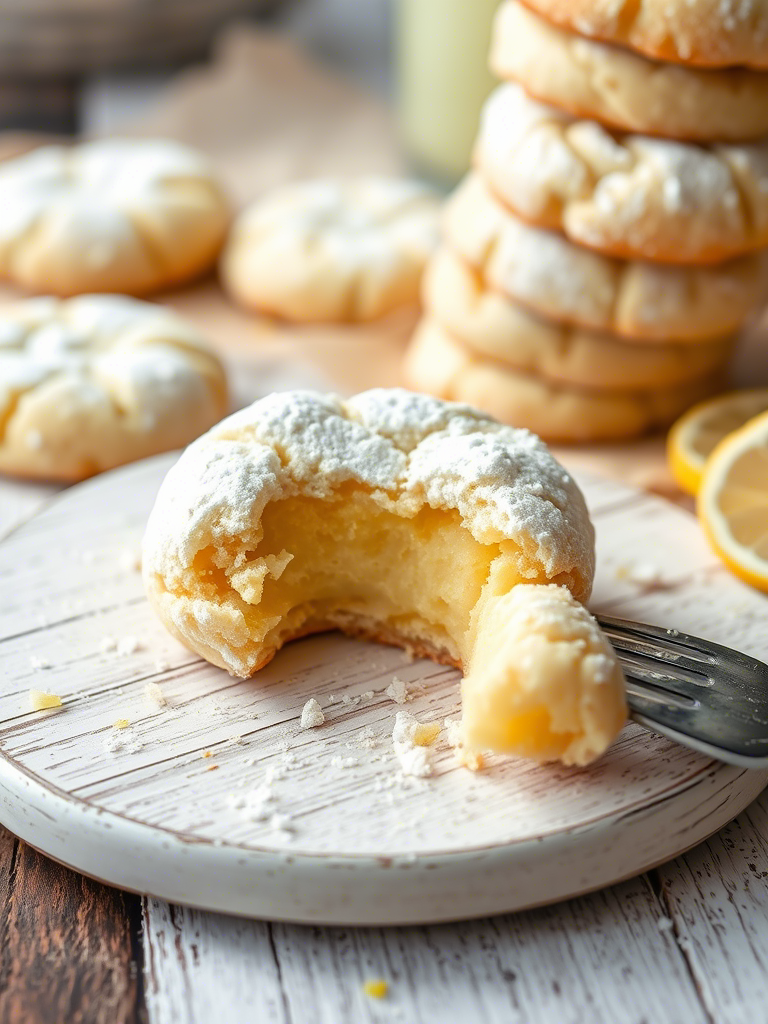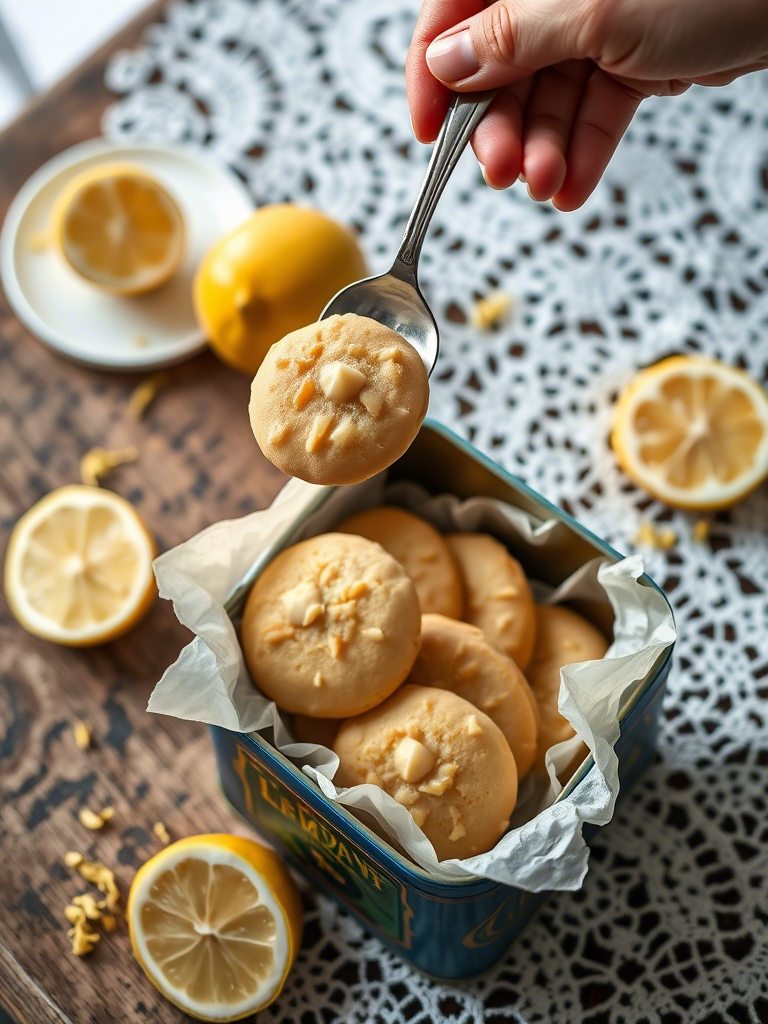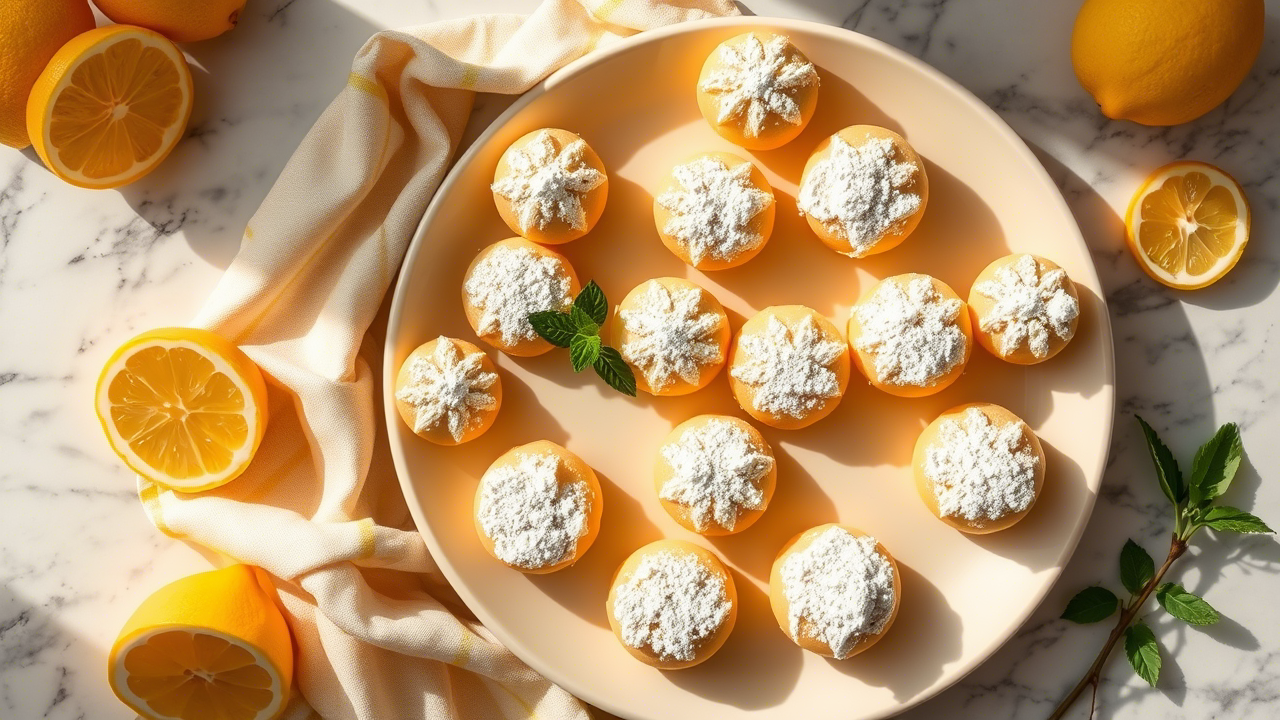A good lemon meltaway doesn’t scream for attention. It whispers. It crumbles. It vanishes—literally melts—before your brain even catches up. And if you’re in the professional kitchen game, you know this humble little cookie carries more weight than it lets on.
You’d be surprised how something that looks like a powdered lump of nothing can become a customer’s favorite thing they’ve ever tasted. Lemon meltaways do that. They’re stealthy like that. And if you still think they’re just another holiday platter filler, well, let’s shift your mindset.
This deep-dive isn’t your grandma’s lemon meltaway tutorial. We’re getting technical, sensory, historical, and even a touch scientific about it.
What Exactly Is a Lemon Meltaway?
Call it a shortbread’s flirtier cousin.
Lemon meltaways are buttery, crumbly cookies with cornstarch-heavy dough that gives them a delicate, sandy texture. Unlike chewy cookies, these fall apart—on purpose. The name comes from their defining feature: they quite literally melt on the tongue.
Usually flavored with fresh lemon zest, lemon juice, and sometimes a little lemon extract (when you wanna cheat), they’re finished off with a snow-dusting of powdered sugar, post-bake. You can flavor the dough subtly or zingy depending on who you’re baking for.
They don’t brown much. If they do, you’ve gone too far.
The Science of the “Melt” — Why It Works
There’s no fluff here. No eggs. No leavening. It’s butter, flour, powdered sugar, cornstarch, and citrus.
The real magician? Cornstarch.
Cornstarch doesn’t just lighten the dough—it inhibits gluten development. That means less chew, more crumble. In fact, cornstarch acts like a tenderizer. And when paired with powdered sugar (which includes a bit of cornstarch too), you double down on the softness.
Fat carries flavor, and lemon oil—especially from fresh zest—blooms right inside that butter. So when you bite in, your brain gets “lemon” before it even tastes sweet. That’s sensory layering at its most basic and most genius.
Also: ever notice how lemon flavor feels cold? That’s not your imagination. Limonene, a compound found in lemon zest, triggers thermoreceptors. It’s weird science, but it adds to the meltaway experience.

Choosing the Right Ingredients (It Matters More Than You Think)
Professional kitchens live and die by consistency, but also nuance.
Let’s start with butter. European-style, high-fat butter (think Plugrá, Kerrygold, or Isigny Ste-Mère) makes a real difference. Why? Lower water content means richer flavor and tighter dough.
Zest: Fresh only. Always zest before juicing. Never the other way ’round unless you want to slip and cut your knuckle.
Juice: Not all lemon juice is created equal. Bottled lemon juice is… barely lemon. It’s bitter, flat, and often cooked. Use Meyer lemons if you want a gentler, floral tone. Regular Eureka lemons for punch. Add ½ tsp of lemon extract only if your zest isn’t doing enough. But don’t start with it.
Powdered sugar: Some brands cut it with more cornstarch than others (up to 5%). That changes the texture. If you want tighter control, sift it yourself and weigh it.
Cornstarch: Always weigh. A little too much and you’ve got dry chalk. Too little and the melt’s gone. 1:4 ratio with flour is a good place to start.
Flour: Low-protein flour works best. All-purpose is okay, but pastry flour gives a finer crumb.
Basic Formula (By Weight — Not Volume)
If you’re baking like a pro, cups are cute but they lie. Here’s a working ratio for 24 cookies:
- 226g unsalted butter, room temp
- 65g powdered sugar
- 40g cornstarch
- 180g all-purpose or pastry flour
- 1 tbsp fresh lemon zest (around 2 lemons)
- 2 tbsp fresh lemon juice
- Pinch of fine sea salt
- Optional: ½ tsp lemon extract
Cream butter and sugar just until smooth. No air needed. Stir in zest and juice. Sift in dry ingredients. Mix gently.
Chill the dough. Roll into 1-inch logs or balls. Bake at 350°F (177°C) for 12–15 mins. No browning. When cool, toss generously in powdered sugar.
Common Mistakes Pros Still Make
Yes, even seasoned bakers screw up lemon meltaways. Here’s where it goes wrong:
- Overmixing the dough. You want to incorporate, not activate gluten. Gentle hand. Think scone-light.
- Too much lemon juice. It breaks the emulsion, makes the dough greasy and weepy.
- Overbaking. Once the bottoms turn golden, texture’s gone. The moment you smell butter is the moment to check the oven.
- Not chilling the dough. Skipping this step equals spread-out pancakes instead of neat meltaways.
- Dusting with sugar too early. Warm cookies absorb powdered sugar and end up sweaty. Let ’em cool first.
Professional Variations to Consider
Once you master the classic, there’s room to riff. Smartly.
- Citrus swap: Blood orange or key lime versions have a huge visual and flavor impact. Use freeze-dried fruit powders to intensify color and aroma.
- Savory-sweet fusion: Add a pinch of thyme or lavender for a Mediterranean twist. Just a pinch. No one wants to eat a bar of soap.
- Filled meltaways: Pipe a bit of lemon curd into thumbprint-style cookies before baking. Or sandwich curd between two thinner cookies post-bake.
- Icy glaze instead of sugar dusting: Powdered sugar + lemon juice = sharp glaze. Use this for a crisper finish.

Shelf Life and Storage Insights
They store well. That’s one of the perks. But not forever.
Room temperature, airtight tin: up to 5 days before texture starts to go mealy.
Refrigerate if your space runs hot, but beware of condensation ruining the sugar coat.
Freeze raw dough logs wrapped tightly. Slice and bake straight from frozen; just add 1–2 mins extra in the oven.
Baked cookies can be frozen too, but skip the powdered sugar until post-thawing.
Trends in the Cookie World That Affect Lemon Meltaways
Yes, even lemon meltaways are subject to trend shifts.
- Nostalgia baking is hot. Meltaways offer that retro, mid-century vibe that resonates across age groups.
- Mini-dessert catering favors portion-control, which meltaways naturally support. 1–2 bite cookies are party-perfect.
- Citrus-focused baking has seen a 35% spike in recipe searches in the past 2 years (Google Trends, 2023). Lemon is leading the charge.
- Gluten-free adaptations are on the rise. Rice flour + cornstarch blends can work—though texture suffers slightly. Almond flour gives a different but still “melt-in-mouth” result.
Global Twists Worth Exploring
You can learn a lot from how other cultures bake.
- Mexican polvorones or Russian tea cakes share DNA with meltaways, though they lean nutty.
- In Japan, lemon-flavored butter cookies are growing in luxury gift sets. Often individually wrapped and glazed.
- Some Scandinavian bakers add a touch of cardamom or vanilla sugar to the mix. It doesn’t scream lemon, but it sings harmony.
Packaging and Presentation: Where Pros Win
If you’re selling these—at markets, online, or via catering—presentation seals the deal.
Transparent cellophane bags with a bright lemon-themed label sells the citrus story.
Tins lined with parchment + sugar dusted cookies = perceived value spike. Add a lemon slice sketch or watercolor-style branding for boutique vibes.
And here’s an insider tip: sprinkle a few lemon sugar crystals (infused sugar) into the packaging. When customers open the bag, they get a scent punch that reinforces flavor memory.
Conclusion: Don’t Underestimate the Meltaway
They’re not fancy. They’re not Instagram bait. But lemon meltaways win hearts, quietly.
They take precision, restraint, and technique. You can’t fake it. The moment someone bites in, they’ll know if you cared.
For professionals, meltaways are a lesson in balance: flavor, texture, temperature, timing. And when you get them right? You don’t just serve cookies. You serve a moment.
So, whether you’re plating for a catered brunch, stocking a bakery shelf, or developing a citrus-forward dessert box—don’t forget the meltaway. Small, humble, zesty. Unforgettable.
FAQs
What are lemon meltaways?
Lemon meltaways are tender, buttery cookies that crumble and melt in your mouth, flavored with lemon zest and juice.
Why do lemon meltaways melt in your mouth?
The high cornstarch and butter content creates a delicate, sandy texture that dissolves quickly on the tongue.
Can I use bottled lemon juice instead of fresh?
You can, but it lacks the brightness and aromatic oils found in fresh lemon juice and zest.
Why is cornstarch important in the recipe?
Cornstarch prevents gluten formation, creating that signature soft, melt-in-mouth crumb.
What type of butter is best for lemon meltaways?
European-style, high-fat butter gives better flavor and less water, resulting in richer cookies.
Can I substitute lemon with other citrus?
Yes, lime, orange, or even grapefruit zest and juice can be used for creative variations.
Why shouldn’t I overmix the dough?
Overmixing activates gluten, which makes the cookies chewy instead of tender.
How long do lemon meltaways stay fresh?
They keep well for about 5 days in an airtight container at room temperature.
Can I freeze lemon meltaway dough?
Yes, tightly wrapped dough logs freeze beautifully and can be sliced and baked as needed.
Should I add powdered sugar before or after baking?
Always after baking and cooling, or the sugar will melt and get sticky.
Are lemon meltaways gluten-free?
Traditional recipes aren’t, but you can make gluten-free versions using rice or almond flour blends.
Can I add fillings to lemon meltaways?
Yes, lemon curd or citrus cream can be piped between cookies or into thumbprint shapes.
Why aren’t my cookies holding their shape?
They likely weren’t chilled long enough or had too much lemon juice.
Can I glaze instead of sugar-coating them?
Absolutely—a light lemon glaze gives them a slightly crisp, tangy finish.
What’s the best flour for a delicate texture?
Pastry flour or low-protein all-purpose flour helps achieve a finer, meltaway crumb.
Ask ChatGPT

Mariana is a passionate home cook who creates delicious, easy-to-follow recipes for busy people. From energizing breakfasts to satisfying dinners and indulgent desserts, her dishes are designed to fuel both your body and hustle.
When she’s not in the kitchen, she’s exploring new flavors and dreaming up her next recipe to share with the Foodie Hustle community.

